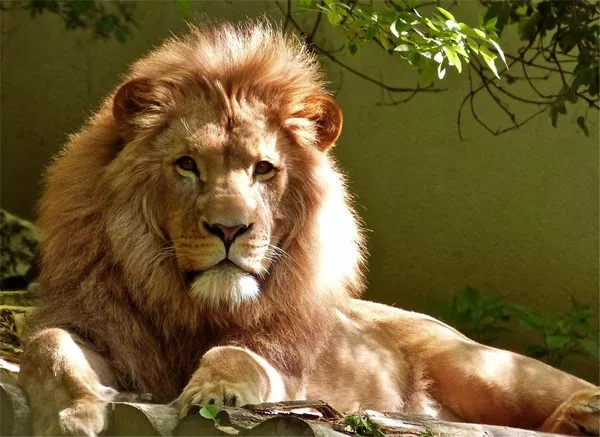Bonsai, the ancient Japanese art form of cultivating miniature trees, has long captivated enthusiasts worldwide. These tiny trees, meticulously crafted over years or even decades, embody patience, dedication, and a profound connection with nature. While bonsai trees come in various shapes, sizes, and species, some stand out not only for their beauty but also for their astonishing price tags. In this article, we delve into the realm of luxury bonsai and explore the world’s most expensive specimen, shedding light on the intricate craftsmanship, historical significance, and cultural value behind these prized botanical treasures.
The Art of Bonsai
Originating in China over a thousand years ago, the art of bonsai was later refined and popularized by the Japanese, who imbued it with their unique aesthetic sensibilities and philosophical principles. Bonsai, which translates to “planted in a container,” involves nurturing miniature trees in shallow pots, meticulously pruning and shaping them to resemble their full-sized counterparts in nature. This ancient practice is not merely horticulture; it is a form of artistic expression, embodying harmony, balance, and simplicity.
Bonsai trees are cultivated from a wide range of woody plants, including conifers, deciduous trees, and flowering species. Each tree is carefully selected and trained to evoke a specific aesthetic or convey a symbolic meaning, such as longevity, resilience, or tranquility. The process of bonsai cultivation requires immense patience and skill, as artisans meticulously sculpt the trees’ branches, roots, and foliage over years or even decades to achieve their desired form.
The Rise of Luxury Bonsai
While bonsai has traditionally been associated with humility, introspection, and the appreciation of nature’s beauty, it has also found a place among the world’s elite as a symbol of wealth, status, and refinement. In recent years, luxury bonsai has emerged as a niche market catering to affluent collectors and connoisseurs willing to pay exorbitant prices for these living works of art.
The allure of luxury bonsai lies not only in the trees’ exquisite beauty but also in their rarity, age, and historical significance. Some specimens fetch astronomical prices at prestigious auctions, attracting bids from wealthy enthusiasts and investors eager to acquire these botanical marvels. From ancient specimens with centuries-old pedigrees to meticulously crafted masterpieces by renowned artisans, luxury bonsai embodies the intersection of art, culture, and commerce.
Unveiling the World’s Most Expensive Bonsai
Among the pantheon of luxury bonsai, one specimen stands out as the epitome of opulence and prestige: the world’s most expensive bonsai. This extraordinary tree, renowned for its breathtaking beauty, impeccable craftsmanship, and staggering price tag, has captured the imagination of bonsai enthusiasts and collectors worldwide.
The world’s most expensive bonsai, a centuries-old Japanese white pine (Pinus parviflora), holds the Guinness World Record for the highest price ever paid for a bonsai tree. This magnificent specimen, known as “Ryu Sei,” or “Dragon’s Spirit,” commands a price tag of over $1.3 million, making it a true marvel of botanical artistry and luxury.
The Legend of Ryu Sei
Ryu Sei, whose name evokes the majestic spirit of the dragon, embodies the essence of Japanese bonsai craftsmanship and cultural heritage. Believed to be over 500 years old, this venerable tree has witnessed centuries of history and tradition, surviving wars, natural disasters, and the passage of time with grace and resilience.
The legend of Ryu Sei traces back to the Edo period (1603-1868) in Japan, where it was cultivated by generations of master artisans in the renowned bonsai nurseries of Omiya Bonsai Village. Passed down from one generation to the next, Ryu Sei has been carefully tended and nurtured, its branches pruned and wired to perfection to achieve its iconic form.
What Makes Ryu Sei the Most Expensive Bonsai in the World?
Several factors contribute to Ryu Sei’s status as the world’s most expensive bonsai, elevating it beyond mere botanical curiosity to a coveted masterpiece of art and culture. Firstly, its age and provenance imbue it with historical significance and cultural value, tracing back to Japan’s rich bonsai tradition and heritage.
Furthermore, Ryu Sei’s impeccable craftsmanship and aesthetic beauty set it apart from other bonsai specimens. Its exquisite form, graceful silhouette, and harmonious proportions reflect the skill and artistry of its creators, who spent decades sculpting and refining the tree to perfection.
The Journey of Ryu Sei: From Omiya Bonsai Village to Global Acclaim
Ryu Sei’s journey from the tranquil nurseries of Omiya Bonsai Village to global acclaim is a testament to the enduring allure and universal appeal of bonsai art. As word of its breathtaking beauty spread, Ryu Sei attracted the attention of discerning collectors and bonsai aficionados from around the world, cementing its status as a cultural icon and botanical treasure.
The Legacy of Luxury Bonsai
In an age of rapid technological advancement and urbanization, luxury bonsai serves as a poignant reminder of humanity’s enduring connection to nature and tradition. As we marvel at the exquisite beauty of specimens like Ryu Sei, we are reminded of the importance of preserving and perpetuating ancient art forms and cultural heritage for future generations to cherish and appreciate.
See Also: Top 10 Most Common Trees In The United States
Conclusion
In the realm of luxury bonsai, where artistry meets extravagance, Ryu Sei reigns supreme as the world’s most expensive bonsai. With its timeless beauty, historical significance, and astronomical price tag, this extraordinary specimen embodies the intersection of art, culture, and commerce, captivating the imagination of collectors and enthusiasts worldwide. As we marvel at the majesty of Ryu Sei and other luxury bonsai, let us remember the profound lessons they impart about patience, perseverance, and the enduring beauty of nature.
You Might Be Interested In:

![10 Most Richest Cities in the United States [Revealed!]](https://www.validdownloads.com/wp-content/uploads/2023/12/Manjula-Pothos.webp)























